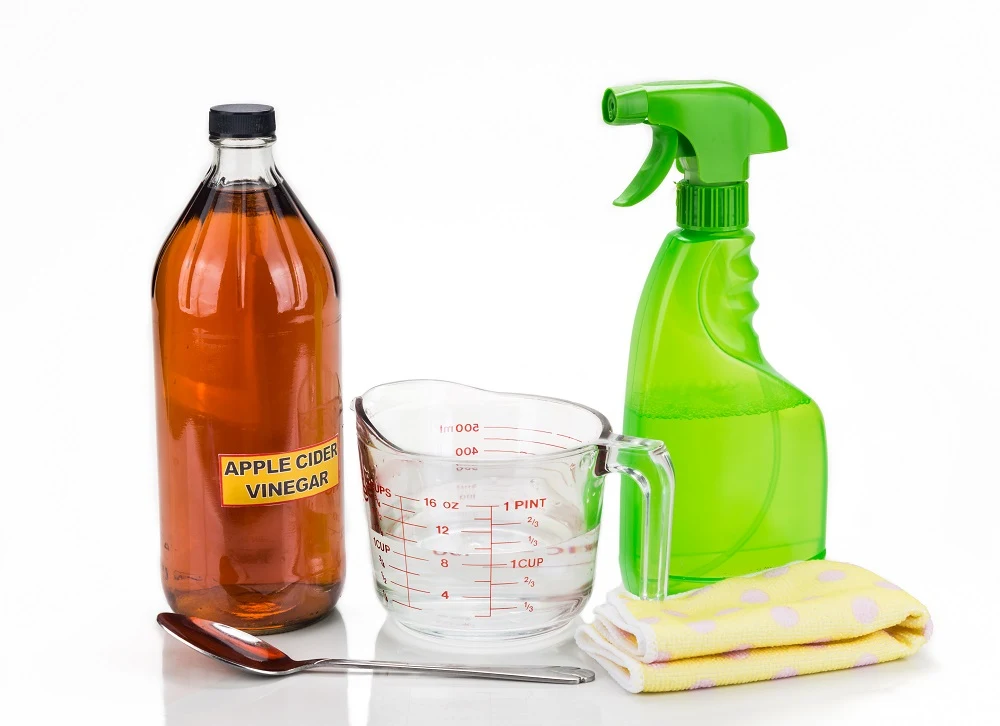When you want to rock a cool hairstyle for a special occasion, hairspray can hold your locks in place so it lasts the whole event.
But hairspray leaves buildup even after your hair is washed with shampoo. Too much buildup can weigh down your hair, reducing its natural volume and movement. Your hair might appear flat and lifeless.
Using harsh chemicals to remove the hairspray causes hair damage. For this reason, many suggest to use vinegar for cleaning the buildups. But the question is; does vinegar actually remove hairspray buildup?
Does Vinegar Remove Hairspray Buildup?
Yes! Both white and apple cider vinegar can remove hairspray buildup. However, be cautious if you have color-treated hair, as vinegar might affect the color.
The pH level of apple cider vinegar is between two to three, which means it is on the acidic side of the pH scale.
Apple cider vinegar’s acidity neutralizes your hair, restores shine to your hair, flushes out chemicals, and resets your hair follicles back to their normal state.
Nutrients, including polyphenols and Vitamin C, enhance your hair health. Some studies have shown that polyphenols strengthen your hair’s growth ability.
Meanwhile, Vitamin C slows the pace of hair loss while also acting as a nutrient that can strengthen hair growth.
The Vitamin B in apple cider vinegar is integral for creating the red blood cells responsible for helping new hair to grow thanks to the oxygen they give your scalp.
What Are the Potential Risks of Hairspray Ingredient Buildup?

Plasticizers, polyglycols, as well as silicones, are prominent hairspray ingredients. The chemical properties in each ingredient help keep your hair in place, but it can come at a cost if overused.
If you use too much hairspray, it can eventually damage your hair follicles and make your hair weaker overall.
The plasticizers in the hair care product are esters of specific acids. Citric acid maintains your hair’s frizziness, which is why hairspray helps hold your hairdo in place.
Adipic acid esters keep your hair strong while protecting it from harmful UV rays in natural sunlight.
Silicones in hairspray cause weaker hair more likely to experience breakage.
Propylene glycol is amongst the list of harmful ingredients in hairspray that can cause hairspray poisoning if hairspray comes in contact with your eyes or internally inside your throat.
How To Apply Apple Cider Vinegar To Remove Hairspray Buildup

Mix a quarter cup of apple cider vinegar with eight ounces of water in a spare clean spray bottle and swish it together to mix.
If you are using white vinegar, dilute it with more water as it is more acidic than apple cider vinegar.
After your regular shampoo and conditioning routine, spray the mixture onto your hair. Let it set for at least five minutes, then rinse it out.
Follow up with a conditioner to restore moisture and balance to your hair. Vinegar can be drying, so conditioning is an important step.
Don’t use this treatment more than once a week as overusing vinegar to remove hairspray buildup can lead to dryness or irritation.
You can safely remove hairspray buildup from your hair using vinegar following these tips.
Frequently Asked Questions
Now that you know how vinegar can remove hairspray buildup from hair, let’s evaluate some related questions.
As long as you dilute the apple cider vinegar with water, the neutralizing treatment will not damage your hair.
If you do not have apple cider vinegar on hand, you can use clarifying shampoos, dish soap, or a baking soda treatment to remove hairspray buildup from hair.
Even 91% isopropyl alcohol in its natural form can be applied directly to your hair as an all-natural solvent to remove hairspray buildup.
While you can substitute white vinegar in the place of apple cider vinegar to remove hairspray buildup, keep in mind that white vinegar has more acidity than its cousin, which means you will have to add more water to dilute the solution.
White vinegar does not have the vital nutrients that apple cider vinegar contains, so you will miss out on the extra nutrient benefits if you make this substitution.
